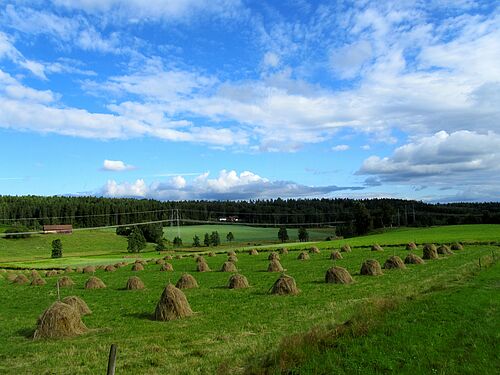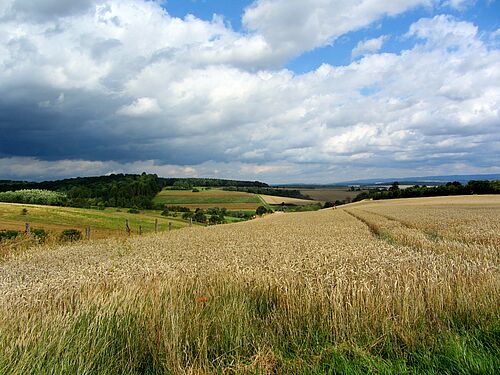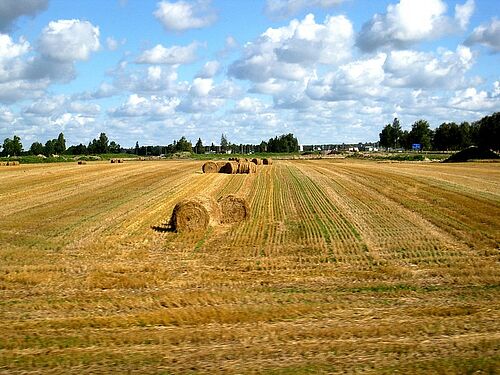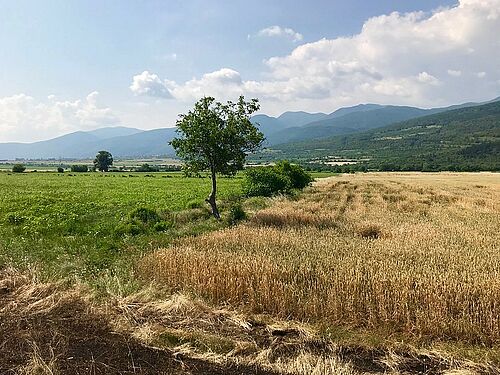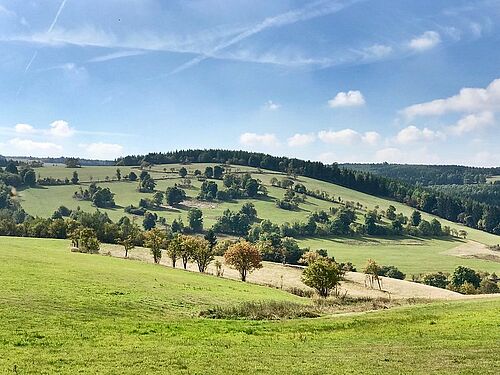With an annual expenditure of about 55 billion euros (about 31% of the total EU budget 2021-2027), the EU’s Common Agricultural Policy (CAP) can be a key instrument to halt biodiversity loss on EU farmland. The CAP already has three key measures to support biodiversity, namely compulsory standards that farmers have to adhere to (Cross Compliance), support measures for improved management (Agri-Environment-Climate Measures), and in 2014, Greening was introduced with three measures to improve Direct Payments. Despite these measures, farmland biodiversity is still declining.
In summer 2020, members of the European Commission invited European scientists to deliver evidence-based recommendations on how the updated CAP could perform better for biodiversity. The voluntary, independent process which followed this invitation was coordinated by iDiv, UFZ, Thünen Institute and the University of Rostock, and in cooperation with many other European research institutions. The process included 13 workshops and an online survey which were conducted between 2020 and 2021. Over 300 scientists and other experts from 23 European member states representing the disciplines of ecology, agronomy, economics and social sciences participated in this consultation. Dr Guy Pe'er, an ecologist at iDiv and UFZ and lead author of the study, emphasises, “The direct interaction with the European Commission was unique and extremely motivating. All scientists participated voluntarily, knowing that there is interest in using their expertise and knowledge to improve the CAP. This demonstrates how important and useful it is to strengthen the science-policy dialogue.”
In the study that emerged from these consultations, the authors highlight six principles as key for the success of the CAP:
- protecting and restoring (semi-)natural landscape features and extensive grasslands,
- rewarding diversity and multifunctionality, for instance through payments that are proportional to environmental benefits or by bundling together measures that, together, deliver multiple environmental objectives,
- improving spatial planning so that measures are implemented at the landscape level,
- supporting cooperative and coordinated implementation of the CAP, for instance by groups of farmers, to enhance cooperation among farmers and cover larger areas,
- expanding results-based approaches where farmers have more freedom to deliver a certain environmental outcome, rather than prescription-based approaches where farmers are told what to do,
- promoting better communication and engagement, with and among farmers, to improve the implementation of compulsory measures and the uptake of voluntary ones.
A particular focus of the study is on the new CAP instrument "Eco-schemes", as this instrument could almost double the budget currently available for biodiversity measures. The authors highlighted which measures are likely to be effective (such as fallow land and extensive permanent grasslands), but warn of the risk that large parts of the Eco-schemes’ budget will be spent on maintaining the status quo instead of improving farmland management. "This risk is quite realistic when one examines the Strategic Plans submitted by the member states”, says Pe’er. “They should really be improved either before implementation or soon after. Adjustments must also consider the world market situation, while making sure we do not risk ecosystem collapse and crop failures by placing, in response to the war, even more pressure on land and biodiversity”, he adds.
Prof Sebastian Lakner, agricultural economist at the University of Rostock and co-author of the study, points out: “Our paper comes at an important time because the war in Ukraine has led to turbulences on the international agricultural markets. Especially in such a time of multiple crises we need rational and cost-effective decisions. Given the high price levels on the world market, we may need to consider higher payment levels for Eco-schemes and Agri-Environment-Climate Measures (AECM) to achieve the necessary biodiversity effects in the EU. With small tweaks we can make the most of taxpayers' money, investing in efficient Eco-Schemes and AECM. Without them, this CAP-Reform 2021 can become a missed opportunity.”
Urs Moesenfechtel
Die originale Pressemitteilung des iDiv finden Sie unter www.idiv.de/en/news/news_single_view/2419.html
Original Publication:
Pe’er, G., Finn, J.A., Díaz, M., Birkenstock, M., Lakner, S., Röder, N., Kazakova, Y., Šumrada, T., Bezák, P., Concepción, E.D., Dänhardt, J., Morales, M.B., Rac, I., Špulerová, J., Schindler, S., Stavrnides, M., Targetti, D., Viaggi, S., Vogiatzakis, I.N. & Guyomard, H. (2022): How can the European Common Agricultural Policy help halt biodiversity loss? Recommendations by over 300 experts. Conservation Letters. DOI: 10.1111/conl.12901
Contact:
Dr Guy Pe’er
German Centre for Integrative Biodiversity Research (iDiv) Halle-Jena-Leipzig
“Agriculture and Ecosystem Services'' group,
Dept. Ecosystem Services,
Helmholtz Centre for Environmental Research (UFZ)
Phone: +49 341 97 33182
guy.peeridivde
Web: www.idiv.de/en/groups_and_people/employees/details/643.html
Prof Sebastian Lakner
University of Rostock
Chair for Agricultural Economics,
Phone: (+49) 381 - 498-3261 (Secretariat)
sebastian.lakneruni-rostockde
Web: www.auf.uni-rostock.de/en/professorships/a-g/agricultural-economics/team/professor-dr-sebastian-lakner/
Urs Moesenfechtel, M.A.(speaks English and German)
Media and Communications
German Centre for Integrative Biodiversity Research (iDiv) Halle-Jena-Leipzig
Phone: +49 341 9733106
urs.moesenfechtelidivde
Web: www.idiv.de/en/profile/1464.html

